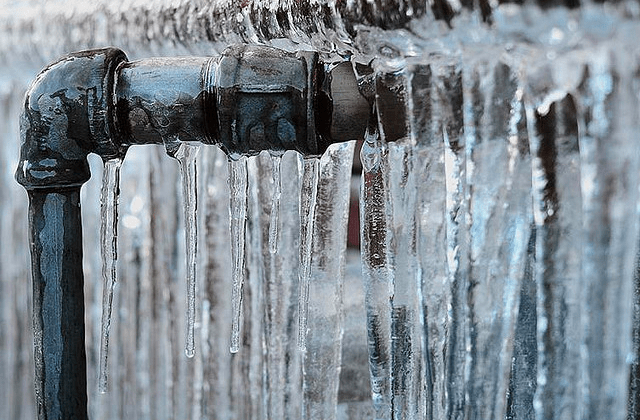This great article down below on the subject of 6 Ways to Prevent Frozen Pipes is definitely fascinating. You should read it.
:strip_icc()/snow-outdoor-faucet-pipes-4af65d1e5e904fb1aa7bf74071fe5d89.jpg)
Winter can damage your plumbing, particularly by freezing pipes. Right here's how to stop it from occurring and what to do if it does.
Intro
As temperatures drop, the threat of frozen pipes rises, possibly causing costly repair work and water damages. Recognizing exactly how to avoid icy pipes is essential for home owners in cold climates.
Avoidance Tips
Insulating at risk pipes
Cover pipelines in insulation sleeves or use warm tape to safeguard them from freezing temperatures. Concentrate on pipelines in unheated or exterior areas of the home.
Heating methods
Maintain interior spaces effectively heated, particularly locations with plumbing. Open up closet doors to permit cozy air to distribute around pipes under sinks.
How to identify frozen pipes
Try to find reduced water circulation from taps, unusual smells or noises from pipes, and noticeable frost on subjected pipes.
Long-Term Solutions
Structural modifications
Consider rerouting pipelines away from outside walls or unheated locations. Add extra insulation to attic rooms, basements, and crawl spaces.
Upgrading insulation
Invest in high-quality insulation for pipes, attics, and walls. Correct insulation helps maintain constant temperature levels and minimizes the risk of frozen pipes.
Safeguarding Outdoor Plumbing
Yard hose pipes and outside taps
Detach and drain garden hoses before winter. Mount frost-proof faucets or cover outdoor faucets with protected caps.
Recognizing Icy Pipelines
What creates pipelines to freeze?
Pipes ice up when revealed to temperature levels below 32 ° F (0 ° C) for extended periods. As water inside the pipes freezes, it broadens, putting pressure on the pipe wall surfaces and possibly causing them to rupture.
Dangers and problems
Icy pipelines can result in water system disturbances, residential or commercial property damage, and pricey repair work. Burst pipelines can flood homes and cause extensive structural damages.
Indications of Frozen Pipes
Determining icy pipes early can stop them from bursting.
What to Do If Your Pipes Freeze
Immediate activities to take
If you think icy pipes, maintain taps available to ease stress as the ice thaws. Utilize a hairdryer or towels soaked in warm water to thaw pipelines gradually.
Verdict
Preventing frozen pipes requires positive actions and fast feedbacks. By recognizing the reasons, indications, and safety nets, home owners can secure their plumbing throughout winter.
5 Ways to Prevent Frozen Pipes
Drain Outdoor Faucets and Disconnect Hoses
First, close the shut-off valve that controls the flow of water in the pipe to your outdoor faucet. Then, head outside to disconnect and drain your hose and open the outdoor faucet to allow the water to completely drain out of the line. Turn off the faucet when done. Finally, head back to the shut-off valve and drain the remaining water inside the pipe into a bucket or container. Additionally, if you have a home irrigation system, you should consider hiring an expert to clear the system of water each year.
Insulate Pipes
One of the best and most cost-effective methods for preventing frozen water pipes is to wrap your pipes with insulation. This is especially important for areas in your home that aren’t exposed to heat, such as an attic. We suggest using foam sleeves, which can typically be found at your local hardware store.
Keep Heat Running at 65
Your pipes are located inside your walls, and the temperature there is much colder than the rest of the house. To prevent your pipes from freezing, The Insurance Information Institute suggests that you keep your home heated to at least 65 degrees, even when traveling. You may want to invest in smart devices that can keep an eye on the temperature in your home while you’re away.
Leave Water Dripping
Moving water — even a small trickle — can prevent ice from forming inside your pipes. When freezing temps are imminent, start a drip of water from all faucets that serve exposed pipes. Leaving a few faucets running will also help relieve pressure inside the pipes and help prevent a rupture if the water inside freezes.
Open Cupboard Doors
Warm your kitchen and bathroom pipes by opening cupboards and vanities. You should also leave your interior doors ajar to help warm air circulate evenly throughout your home.

I discovered that page about Prevent Frozen Pipes while doing a search on the search engines. Are you aware of somebody who is fascinated about the topic? Be sure promote it. Kudos for your time. Don't hesitate to come by our site back soon.
Call Today